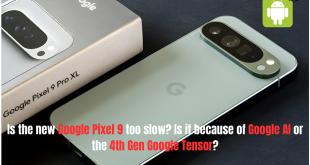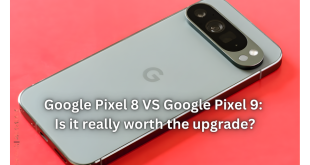Logically speaking, Google Pixel 9 AI should be considered the “first AI phone.” Compared withApple’s disappointing new product launches and its “toothpaste-squeezing” Apple Intelligence, Google has already gathered the three magic weapons of “Google Pixel 9 AI”, “Android 15” and “Gemini on the Edge”.
In August, Google held a press conference for the Google Pixel 9 AI. It has been a long time since the “”son”” of the Google phone has received much attention in China. The new Tensor G4 chip, the new Gemini Nano on end, and the new system-integrated AI functions (call logs and summaries, screenshot information analysis and access, AI continuous shooting optimization, background retouching).
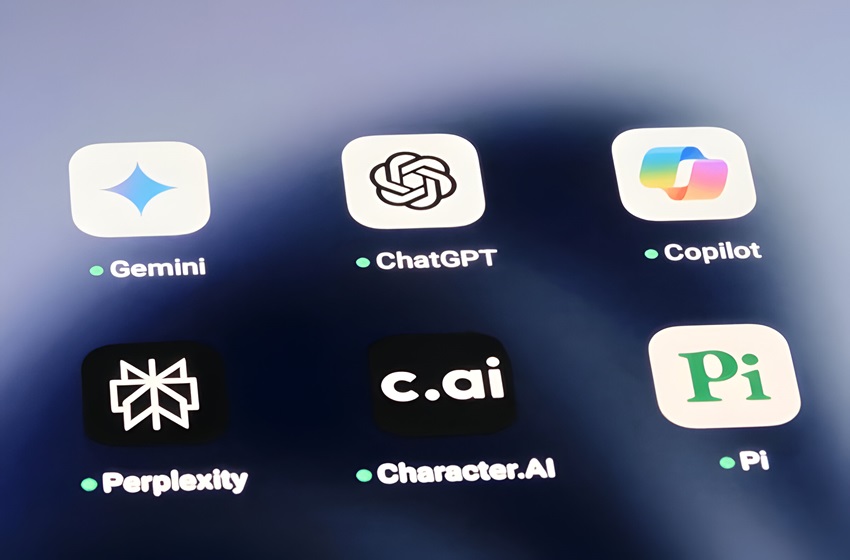
Last week, Android 15 was officially released in a low-key manner. Compared with the hardware itself, it is the key to truly unleashing the system-level capabilities of Gemini, making Google Pixel 9 AI the final hammer of the first system-level AI mobile phone. “”Gemini will change every application owned by Google and every platform managed by Google.”” From Google CEO Sundar Pichai.
Android Leads the AI Revolution with Google Pixel 9 AI
If you still have an impression of the early days of the mobile era, Android was labelled as “”following the trend,”””low-end,”” and “”pirated”” in the early years, but its “”open source”” attribute also spawned countless technology companies; later, Android experienced a series of stages such as the flourishing of customized UIs and the major revision of the native Android design language, and now it has entered a series of stages such as the comprehensive “”AI.””
Users who have not experienced this history personally will always be curious: How did Android grow year after year to become the operating system with the largest market share today?
A Comparison of Apple AI and Google AI Devices: (Google Pixel 9 AI vs Apple AI)
| Category | Android (Google) | Apple (iOS) |
| AI Integration | Integrated deeply into Android 15 with Gemini | Limited AI features, slower AI integration |
| Flagship Device | Google Pixel 9 | iPhone (latest models) |
| Key AI Features in Pixel 9 AI | Tensor G4 chip, Gemini Nano, AI-powered system functions (e.g., call summaries, screenshot analysis, background retouching) | No comparable system-wide AI features |
| Market Share (2024) | 70.69% of the global OS market | 28.36% of global OS market |
| Open-Source Strategy | Android open source (AOSP) with closed GMS (Google Service Framework) | Fully closed, proprietary system |
| OS Evolution | Emphasis on AI-driven improvements from Android 8-15 | Slow feature rollouts, limited AI focus |
| Notable Past Innovations | OK Google, Google Now, Material Design, face unlocking | Siri, Face ID, App Store |
| Current Strategic Focus | Gemini AI across platforms, integrated AI experiences | Incremental hardware/software improvements |
A Brief History of Android’s Rise
According to former Google CEO Schmidt, Google gained Android in 2005 to compete with Microsoft and try to prevent Microsoft from replicating its success in the desktop market in the booming mobile market in the future.
In 2007, Android was unveiled, and the market reaction was three parts cold and seven parts disdainful. Nokia was quoted as saying, “”Wedon’t think it is a threat.”” A member ofMicrosoft’s mobile system Windows Mobile team at the time said, “”Idon’t understand what impact it will have.””Google’s idea is openness and cooperation. Android cooperates with many hardware, software, and operators to establish the Open Handset Alliance. Google promises Android will become an open-source, flexible, and reliable system.
Openness also brought confusion. Android became an operating system that could be installed on everything from e-readers to knock-off phones. Many new mobile device users, whether it was “”Donut (Android 1.6)””, “”Frozen Yogurt (Android 2.2)””, or a “”customized system”” with rogue plug-ins, were all the same.
Android has been involved in thousands of patent lawsuits and is facing serious software piracy and system security issues. Ironically, the so-called “”free software”” has become a major selling point for Android phones.
From 2008 to 2011,Android’s chaotic but open nature increased its share of the global smartphone OS market from 2.8% to 48%, which was a response toiOS’s “”secure but closed”” market performance.
After accumulating enough installations through tolerance, Google rectified the chaotic phenomenon of Android applications and the reputation problems that were directly caused by it. In 2011, Google launched Android 4, which was a historic version upgrade – a key version that formalized and standardized Android devices and truly competed with iOS.
The three versions of Android 4 that were released between 2011 and 2013 unified the interface design of mobile phones and platforms, introduced face unlocking, optimized the smoothness of the system on low-end devices, and expanded the popularity of Android once again. In 2011, Android tablets only accounted for 1.8% of the market, but by 2013, it had reached 61.9% (iOS tablets accounted for 36% during the same period).
Two other features from Android 4 were quite prophetic: OK Google and Google Now, which can be seen as the predecessors of voice search and digital personal assistants.
Because of the big step forward in terms of functions and experience, Android 4 did not follow the update rhythm of one generation per year. In 2014, Google launched Android 5.0 (also known as Lollipop), which is also a classic. Android5.0’s design is benchmarked against the flat style of iOS next door, and the colourful card-style Material Design has been launched. The system adopts a new design language and reshapes the design specifications of Android developers.
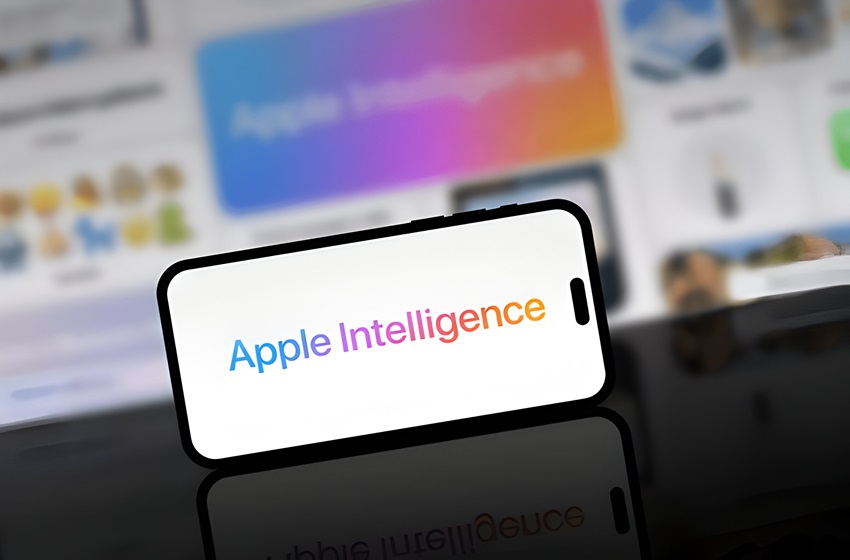
It was also from this generation that users” “”stereotype”” of Android changed completely. The first thing people did when they got their phones was not to flash ROMs or change themes but to pursue native Android in order to experience “”authentic”” Material Design.
For example, OnePlus, which was founded in 2013, launched Oxygen OS and Hydrogen OS by re-customizing Android 5.0, focusing on being a “”custom system closest to native Android.””
The iteration from Android 4 to Android 5 has gradually allowed Android to eliminate the labels of “”low,” “”messy,”” and “”cheap”” and evolve into a system with a unique design language, stable and smooth operation, while still maintaining the open source spirit.
Throughout the mobile Internet era, the land of Android has become fertile because ofGoogle’s fertilization, which has led to the emergence of many classic secondary development OSes, such as MIUI (Xiaomi), One UI (Samsung), ColorOS (OPPO), Nothing OS (Nothing Phone), etc. Not only mobile phones but also e-readers, car computers, projectors, etc. are all its carriers, and it has almost filled every hole in contemporary digital life.
Todays World by Google AI (Google Pixel 9 AI)
- Today, Android has helped Google realize its vision of becoming the dominant mobile OS. According to data from 2024, Android accounts for 70.69% of the global operating system market share.
- But Google also faced new challenges. Coincidentally, sitting at the poker table, besides Apple, which has always been in confrontation with it, there is also Microsoft, which has made a comeback in the era of cloud computing and AI. The former challenger and the challenged have swapped positions this time.
AI became somewhat important and then soon became extremely important. The signal came from a time farther away than we thought – beginning in 2016, when it appeared more frequently at Google I/O.
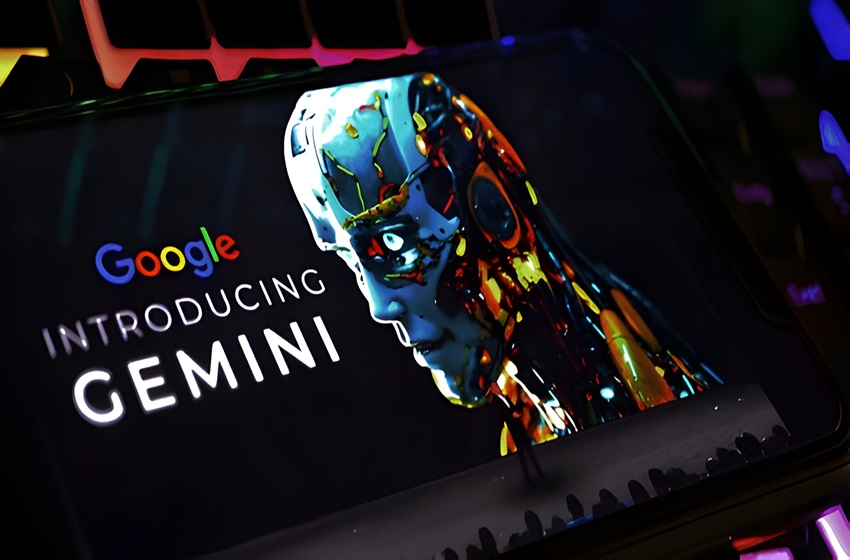
At Google I/O in 2016, Google released Google Assistant, a highly personalized voice assistant that can understand natural language (which caused a lot of feedback and speculation about the future at the time);
In 2017, Google Lens image recognition technology was released, which caused a “”cat guessing craze””; the algorithm in Gmail generated “”smart replies”” after reading the emails; the establishment of Google AI was announced, and TensorFlow Lite and Google Cloud TPU were released to help developers better use AI technology;
After the Silicon Valley data crisis in 2018, Google also used AI for privacy protection and digital health.
In all subsequent OS releases starting from Android 8, various AI-based “”Smart Functions”” have been promoted as the focus.
Android 9 focuses on using AI to predict user usage habits and provides users with quick operation suggestions. Machine learning has already reached small but practical functions, such as adjusting brightness and optimizing battery usage;
Android 10 has the shadow of “”generative AI,”” which provides context-based intelligent replies and real-time subtitles, allowing videos, podcasts, and voice to be “”sound-to-text””;
The theme of Android 11 is smart device control and smarter conversations and suggestions, predicting user input habits; Android 12 uses AI to strengthen privacy protection and continues to deepen smart replies; Android 13 returns to privacy and battery.
AI Integration in Android: A Game Changer
AI did not have a so-called “”Killer App””. Instead, it was a technology behind the scenes and did not come to the “”forefront”” of Android. Until ChatGPT appeared.
AI was mentioned 120 times at Google I/O in 2024. Gemini is the most direct manifestation ofGoogle’s AI capabilities, and Google still hopes that it will not be just a single application on Android 15. With its mastery of the underlying framework of the system, Google has integrated Gemini more deeply with the operating system, and users can call up Gemini in any application as a cross-application “”service”” at the system level.
Gemini and the Future of Android (Starting From Google Pixel 9 AI)
Although Google is always considered being slow to occupy the position in this wave of AI, its system advantage is still obvious. If the “”hardware and software integration”” advocated by Steve Jobs means that hardware is the carrier of software, and if you want to bring out the best performance of software, hardware is tailor-made for it. ThenGoogle’s idea is to occupy more hardware through software. In the era of mobile Internet, it is achieved through Android.
This means that Android has long passed the stage of pioneering. However, in recent years, there has been more and more criticism of Android open source. Google split Android into two parts, AOSP (the open-source part of the Android system) and the closed-source GMS (Google Service Framework), and many applications and APIs in AOSP have been transferred to the closed-source GMS. Xiaomi Pengpai OS and Huawei Hongmeng are slowly separating themselves from the influence and constraints of Android.
If open source is not the engine that continues to drive growth, then Android needs to find a new narrative.
For lastmonth’s hardware launch, Ican’t recall any highlights of the Google Pixel 9 AI hardware itself except for the color. But I remember what Gemini can do on the secondary screen of Samsung and Motorola folding screens, helping me write emails, make fitness plans, organize calendars, and check manuscripts.
There is a sense of urgency that “”Google Pixel 9 AI sales will be put aside for now, but everyone must have a Gemini.”” Gemini is not only a new narrative but also a new mission that Google has found for Android and a new insurance policy that it has customized for itself.
FAQs
- What makes the Google Pixel 9 the “”first AI phone””?
The Google Pixel 9 AI integrates AI at the system level through Gemini, powering features like call handling and image processing across all apps.
- How does Android 15 differ from previous versions in terms of AI?
Android 15 uses Gemini AI across the system, making AI available in all apps, unlike earlier versions with isolated AI features.
- Why is Android’s open-source model important, and how is it changing?
Android’s open-source model allowed customization, but Google is shifting key features like AI to its closed-source GMS for better control.
- How does Gemini AI compare to Apple’s AI features?
Gemini AI offers broader, system-wide integration, while Apple’s AI is more limited to specific tasks like Siri and machine learning.
- What is the future of AI in Android, and how will it affect users?
AI will increasingly automate and personalize tasks, making interactions more intuitive across all apps and devices.
